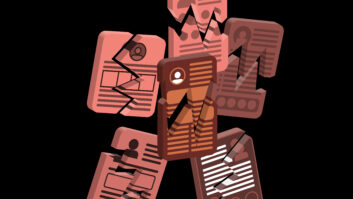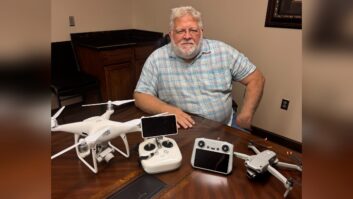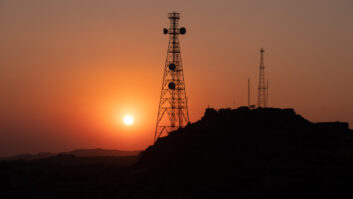As a broadcast engineer who has been involved with both FM and AM IBOC in the field, I feel compelled to add my voice to the ruckus about HD Radio.
HD-R for AM is both different and the same as HD-R for FM. Let me explain.
Shared characteristics
As a concept for public consumption, high-definition radio (buzzword: “digital”) is an important tool that says radio has renewed itself, that it is current and it is keeping up with the profound changes brought about by the digital revolution. If we, the broadcast industry, do not get behind it unanimously, it will indeed go the way of AM stereo.
And if this happens, we will certainly be left behind in the background noise of all the digital media on and off the Internet.
The television industry recognized that it must push ahead with HDTV with a little shove from Congress. We aren’t that lucky (or unlucky) and thus have to be self-motivated.
Newness is an inescapable product promotional marketing tool and a needed boost for the radio industry today. AM – ancient modulation – probably requires it more than FM.
Different characteristics
HD Radio brings three striking performance enhancements to AM radio:
1) Audio bandwidth can approach CD quality, providing strikingly more realistic sound with greater definition than is normally encountered with today’s analog AM receivers;
2) All noise associated with AM reception is eliminated. There is no ignition noise or AC power line buzz;
3) HD-R gives AM the same visual content of FM RDS plus the HD-R extensions, such as the ability to display messages on the radio dial.
In addition, especially noticeable in an acoustically dry automotive environment, AM HD-R can deliver stereo sound with lush ambience. And unlike the Motorola and Kahn analog AM stereo systems, it does so without noise.
It is time to rethink what the AM broadcast band should be rather than what it has been. Forget about skywave propagation. It is time to consider AM as a local service like FM. It is time to experiment with anti-skywave antenna systems. With the proliferation of always-on gadgets that generate hash in the AM band, analog reception – even in the city-grade service contour – is noisy.
The digital genie comprising thousands of microprocessor gadgets is out of the bottle, as is its noise fog. Nothing will put it back in. The only way the AM band can fight back is with fulltime digital modulation.
We should not be overly concerned about digital hash from IBOC. Hash already is a fact of life on the AM band. If we redefine AM as a local radio service that can continue to be received at night in the immediate vicinity of its city-grade ground wave, the digital carrier noise issue becomes less problematic.
HD Radio brings two striking performance enhancements to FM radio: it eliminates multi-path distortion while permitting full stereo separation; and it permits the broadcasting of additional new program offerings on the existing RF channel.
FM HD-R permits better stereo separation, and thus image lushness, in an automotive environment in outlying parts of the city-grade contour where most mobile receivers have already partially blended to monaural. Furthermore, it doesn’t share the 20 dB audio noise floor penalty caused by the 38 kHz amplitude modulated stereo separation (L-R) audio subcarrier of the Zenith FM multiplex system.
Multicasting is self-explanatory. It is, in my opinion, the killer application for FM broadcasters. It gives new, free choices to the listening public, assuming we are willing to produce new and innovative programming content.
Because the Ibiquity standard supports AM and FM equally regarding all-mode AM/FM reception, we need to go forward and equip both bands with HD Radio transmitters. And we need to pressure the FCC into allowing full-time IBOC on AM. But to do so we need to view AM as a local service and concentrate on groundwave reception, including the development of anti-skywave antennas.
The era of DX’ing has come to an end now that the entire world is wired for the Internet. We no longer require the ionosphere to provide an over the horizon path.
For FM, we have to think new content, free content; and invest in our audience by providing them with more choices such as HD-R multicasting.







